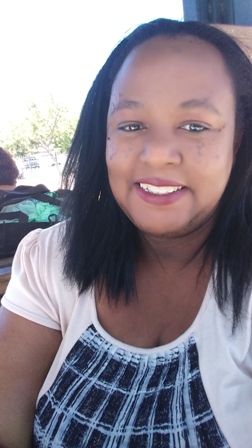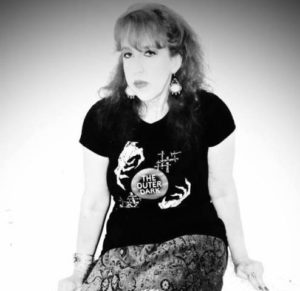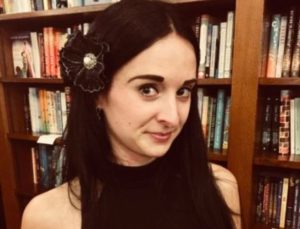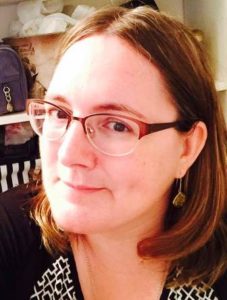Welcome back! October is winding down, but we’ve still got more from our eight amazing authors in this month’s interview series! In fact, this week will see not one, but two posts as today and tomorrow, I’m talking to our featured authors more one-on-one to really dig deep into their process, inspirations, and advice for other writers out there.
So let’s take it away!
Lori, you’re a prolific author with so many books already in your bibliography. How do you keep yourself motivated to write? Have your habits as a writer changed at all over the years?
 LORI TITUS: I always have a story that I want to write. My challenge has been keeping my attention on just one of the books I have planned. When it comes to my own work (rather than ghostwriter material) I allow myself to stop and start certain novels. I usually have at least one “back burner” book which simmers while I work on something else.
LORI TITUS: I always have a story that I want to write. My challenge has been keeping my attention on just one of the books I have planned. When it comes to my own work (rather than ghostwriter material) I allow myself to stop and start certain novels. I usually have at least one “back burner” book which simmers while I work on something else.
Oddly enough, my writing habits have changed greatly in some ways while staying the same in other aspects. When I first got published, I was still working my day job. Since I only had nights and weekends to dedicate to my work, my goal was to complete one full-length novel a year; any short fiction I produced was extra.
I’ve been a full time author now for almost four years, and it’s allowed me to do a lot more work. I still enjoy writing at night (and the best writing jags are when I can write from midnight until four in the morning).
Lee, Zero Perspective is your debut novella. What inspired you to want to expand your bibliography into longer fiction right now, and how was this process different from (or similar to) writing short fiction?
LEE FORMAN: I’ve wanted to write longer fiction as long as I can remember. My first attempt at writing was a novel. But I realized I needed to build my skills and get my name out there before attempting the feat of writing a book. My foray into long fiction came quite suddenly and unexpectedly. I realized the intended short story of Zero Perspective could be a full-length piece, so I worked hard to finish the book, as it had been a goal of mine for a long time. The process for this particular book was similar to short fiction in the sense that it began as such. The pacing and style of the book are also similar to short fiction, as there isn’t much back story on the characters or the world they’re in. It starts with four people in a normal situation and from there, dives non-stop deeper into stranger and stranger places. The way the story flows and keeps going, it reads like short fiction, but has the ‘meat’ of a book.
Anya, you’ve built up an illustrious body of work over the last few years. What made now the right time to put together a collection? How did you choose which stories to include in the table of contents? Were there any that almost made the cut but weren’t ultimately included in the book?
 ANYA MARTIN: People have been asking me when I’d do a collection for a couple of years. Once I reached a reasonable word count, I developed the line-up. I considered another offer, but a delightful lunch at DragonCon with Steve Berman of Lethe Press convinced me that he had a real understanding and faith in my work. Lethe also has a proven track record with debut collections by women spec-lit authors which I hate to say still may need an extra promotional push. Per my first answer, I selected most of the stories I’ve published between 2015-2017 and I pretty much knew the table of contents from the start. I saved “Weegee, Weegee, Tell Me Do” (Tales from the Talking Board) for a future collection because I saw it as having some similarities to “The Un-Bride,” being also set in the early 1920s. I left out “The Toe” (Feet, Dunhams Manor, 2014) because it’s more gory horror than the rest. And “The Courage of the Lion Tamer,” my Daybreak story is readily available online, plus thematically, as an optimistic near-future science fiction story, it totally didn’t fit.
ANYA MARTIN: People have been asking me when I’d do a collection for a couple of years. Once I reached a reasonable word count, I developed the line-up. I considered another offer, but a delightful lunch at DragonCon with Steve Berman of Lethe Press convinced me that he had a real understanding and faith in my work. Lethe also has a proven track record with debut collections by women spec-lit authors which I hate to say still may need an extra promotional push. Per my first answer, I selected most of the stories I’ve published between 2015-2017 and I pretty much knew the table of contents from the start. I saved “Weegee, Weegee, Tell Me Do” (Tales from the Talking Board) for a future collection because I saw it as having some similarities to “The Un-Bride,” being also set in the early 1920s. I left out “The Toe” (Feet, Dunhams Manor, 2014) because it’s more gory horror than the rest. And “The Courage of the Lion Tamer,” my Daybreak story is readily available online, plus thematically, as an optimistic near-future science fiction story, it totally didn’t fit.
Doungjai, glass slipper dreams, shattered is your debut collection. The book is filled with powerful pieces that find influence in part from fairy tales, both in imagery like with the title and also in form with the way that you write about female characters being forced to confront almost mythical darkness in the world. What is it that draws you to these classic tales? Do you remember the first fairy tale or folktale you ever read or saw, and do you have a personal favorite?
DOUNGJAI GAM: I grew up on a steady diet of Disney movies, fairy tales, and goofy 80s sitcoms. I think what drew me to all of this as a kid were the happy endings, and in a way that’s what also drove me away—life is not a fairy tale nor a 30-minute sitcom where your problems get solved around the 24 minute mark. I still draw inspiration from them, but don’t expect a prince on a white horse coming in to save you. we also had two sets of encyclopedias in the house, and I loved retreating into those (along with a beat-up, out of date, falling apart world atlas that I still have) when I needed to escape reality, and through them I discovered mythologies and far off lands that still fascinate me to this day. I don’t know that I have a favorite fairy tale, but the one that sticks with me the most is the one about the woman who wore a ribbon around her neck…I had a book of fairy (or cautionary) tales when I was a kid, and the drawing of the woman’s head on the floor with the ribbon nearby…I can still see it clear as day in my mind.
Michael, The Human Alchemy is your second collection. How does it differ from The Lure of Devouring Light, and conversely, what overlap do you see between the two books? How do you feel you’ve changed as a writer over the last few years?
 MICHAEL GRIFFIN: At first I was mostly focused on the overlap, and saw more similarities than differences. It’s true that many stories in one book could be slotted into the other book and would feel like they belong.
MICHAEL GRIFFIN: At first I was mostly focused on the overlap, and saw more similarities than differences. It’s true that many stories in one book could be slotted into the other book and would feel like they belong.
In the first book, I designed the two novellas, “Far From Streets“ and ”The Black Vein Runs Deep,“ to mirror one another, but otherwise each story stood completely on its own. I believe The Human Alchemy has greater focus and consistency, and more of the stories feed off one another, or have thematic connections or even more specific links.
As a writer, my confidence has grown and my focus has shifted toward longer narratives. Three or four years ago I thought of myself as a short story writer who enjoyed dabbling in novellas and might enjoy taking a crack at a novel. Now I’d say that although I still enjoy the short story and don’t intend to ever stop writing them, I really feel I’ve hit my natural, comfortable stride when I’m working on something longer. It just feels right to me. Partly it’s that I naturally like to get into the mind of the character, and watch as they change in their perceptions and transform in how they interact with the world, and that takes time.
Another big reason is that I get so deep into building characters and sets and props and really designing the whole world of the story, and this is just something I have to do in order to see that world and feel it clearly enough to inhabit it like a true reality. The amount of work required to build a world and a set of characters and names and places is not really that much less for a short story than for a novella or novel. I believe that’s part of what makes me a very slow short story writer, and a little less slow as a writer of novellas, and actually fairly quick as a writer of novels. I can lay the words down on paper pretty fast once I get going. It’s just a matter of getting my world designed, getting to know my characters, outlining the plot or the beats of the story. For this reason I feel like the longer narrative ends up working better for me, and I spend less time trying to cram all my ideas into a space too small for them to fit.
Calvin, your collection is composed primarily of flash fiction. What draws you to writing such compact stories? Do you feel that horror in particular is well suited for flash fiction?
CALVIN DEMMER: I enjoy the challenge. With flash fiction it becomes a fun battle to get the prose as tight as possible. You do have a word count limit after all, and it becomes interesting when deciding what to cut, what to show/tell, while still trying to create a purposeful pace and rhythm to the story. Also, some stories have twists, while others follow a different resolution. I first started writing flash fiction to experiment with different genres, which is why the collection flirts with so many of them even though most of the tales tend to have a dark pulse. I first got the idea for a collection after reading Maria Haskins’ Dark Flash, so I am grateful she planted the seed in my head.
And I definitely feel horror works well in flash fiction. While it may be difficult to have the build up of a longer work, you do have the opportunity to unnerve the reader, or hit him them hard if you have a clear vision and right flow to the story.
Christa, one thing that struck me most about your collection was how well you can toggle between strikingly beautiful language and visceral, disturbing details. As you’re writing, in particular in early drafts, is there a specific way you work to balance such juxtaposing details, or do you simply allow the prose to flow as you create and let the specific piece dictate the balance of details?
 CHRISTA CARMEN: First, thank you! I would have to say that I let the prose flow as I’m ironing out the structure of a story, and allow that specific piece to dictate the balance of details. Sometimes a first draft comes from a more straightforward place, where the goal of getting down the narrative is key, as opposed to being driven by the language, and the imagery that language is evoking. Sometimes a story changes significantly from start to finish in terms of that balance, and occasionally, like with my short story, “Lady of the Flies,” it can change more than once.
CHRISTA CARMEN: First, thank you! I would have to say that I let the prose flow as I’m ironing out the structure of a story, and allow that specific piece to dictate the balance of details. Sometimes a first draft comes from a more straightforward place, where the goal of getting down the narrative is key, as opposed to being driven by the language, and the imagery that language is evoking. Sometimes a story changes significantly from start to finish in terms of that balance, and occasionally, like with my short story, “Lady of the Flies,” it can change more than once.
Last October, I visited Scary Acres in Hope, Rhode Island, tiptoeing through their haunted corn maze and shrieking with laughter along their wagon ride’s bumpy path. The visit was the catalyst for the creation of Priscila Teasdale after generating the question, what if a haunted house worker’s life had been a series of unfortunate events, and what if she leaned a bit too heavily on her haunted house persona in order to cope? The answer? Why, she’d become the Lady of the Flies, of course.
But Priscila took on a life of her own over the course of writing this story. The original concept saw her very much as a Leatherface-esque character: yes, she’d likely had a rough go of it, but her actions were meant to terrify and even alienate readers. When Priscila came onto the scene, I wanted it to be the equivalent of a chainsaw revving too close for comfort. Yet she became something so much more than that, a real flesh-and-blood person whom I felt had no other options but to reclaim her sense of self by lashing out at those who strove to strip this from her.
There are several image-driven as opposed to narrative-driven pieces in Something Borrowed, Something Blood-Soaked, and in the case of “Thirsty Creatures,” I can tell you exactly why this was the case. Over a year ago now, a post was making the rounds on Facebook that featured the work of Polish painter Zdzisław Beksiński, who had specialized in ‘dystopian surrealism’ over the course of his life. A writer friend of mine tagged me in the post, challenging me to pick my favorite image and write a story about it. There were dozens of images that appealed to me, but the one of a young, wind-whipped girl astride a skeleton horse with trees that appear to be on fire in the background spoke to me most directly, and “Thirsty Creatures” was the result.
Gemma, Anya, and Christa: you’ve all utilized aspects of cinema very effectively in your work. For you personally, what is the draw of the world of film when writing, and how do you feel that incorporating cinematic influences affects readers?
ANYA MARTIN: Why, thank you, Gwendolyn. Thanks to my dad, I grew up watching lots of movies, especially horror but also a variety of genres and serious drama and foreign films. Some of my favorite “day job” work as a journalist has been film criticism and interviews with filmmakers. I think it’s almost impossible as a contemporary writer not to be influenced to some degree by cinema, and if you want to engage readers with short attention spans, you have an upper hand if you can write visually.
“Resonator, Superstar,” “The Un-Bride,” and “Sensoria” engage film directly. I don’t think I could have written “Resonator, Superstar” if I had not been fortunate enough to have the opportunity to attend a “live” reenactment of Andy Warhol’s Exploding Plastic Inevitable (EPI), which was part of Andy Ditzler’s Film Love avant garde series in Atlanta, though alas “sans” an actual The Velvet Underground performance. In “Sensoria,” I tried to evoke the kind of lush and brutal visuals consistent with Dario Argento’s cinema. In “The Un-Bride,” Elsa Lanchester is the narrator and some of the foundational material comes directly from her autobiography which also helped me mirror her voice. However, I also tried to match key scenes in “Bride of Frankenstein,” especially the opening sequence with Mary Shelley, her husband Percy and Lord Byron but instead Elsa, her husband Charles Laughton and director James Whale. So in sum, I watched movies to get those parallels between text and screen right, not only because of course, film buffs of these works would hold me accountable but I also really enjoyed the challenge of re-assembling cinematic elements into the prose medium.
 GEMMA FILES: In film, perspective is everything. The very construction of a camera means that you’re always thinking about framing: what angle and why, what’s inside the frame, what’s outside it. There’s a solidity to film that’s completely illusory, and a kineticism to film that comes from playing with speeding up and slowing down time through editing. I enjoy using film terms to get across shifts in action and understanding: swish-pan, slo-mo, step-printing, iris fade, smash cut to black. I’m not sure if my readers totally get what I’m seeing in my head, but I hope they do, and maybe it’ll make them look up the terms and realize that the visual shorthand we’re all educated to recognize by watching movies and TV probably exists inside them as well—that maybe they’ve been using them without knowing for longer than they think. I also really love how film, especially experimental film, allows us to layer input from several tracks at once over each other, sort of the same way a graphic novel layers sound, action, diegetic and ambient sound, dialogue, thoughts, etcetera over a series of still frames. Film also not only allows but forces you to cut straight from one thing to another, skipping all the boring stuff in between as long as you make sure your reader can figure out the most obvious way we must’ve gotten from here to there: less muss and fuss, less waste. I love all that.
GEMMA FILES: In film, perspective is everything. The very construction of a camera means that you’re always thinking about framing: what angle and why, what’s inside the frame, what’s outside it. There’s a solidity to film that’s completely illusory, and a kineticism to film that comes from playing with speeding up and slowing down time through editing. I enjoy using film terms to get across shifts in action and understanding: swish-pan, slo-mo, step-printing, iris fade, smash cut to black. I’m not sure if my readers totally get what I’m seeing in my head, but I hope they do, and maybe it’ll make them look up the terms and realize that the visual shorthand we’re all educated to recognize by watching movies and TV probably exists inside them as well—that maybe they’ve been using them without knowing for longer than they think. I also really love how film, especially experimental film, allows us to layer input from several tracks at once over each other, sort of the same way a graphic novel layers sound, action, diegetic and ambient sound, dialogue, thoughts, etcetera over a series of still frames. Film also not only allows but forces you to cut straight from one thing to another, skipping all the boring stuff in between as long as you make sure your reader can figure out the most obvious way we must’ve gotten from here to there: less muss and fuss, less waste. I love all that.
CHRISTA CARMEN: Various aspects of cinema have played more of a role in my work than I would have initially conceded to. I’m often motivated by tone, atmosphere, and imagery, and much of my fiction is influenced by the imagery within a horror film in general, or by the imagery utilized by a specific producer or director. I’ve found it quite rewarding to ride that influence to the point of a story’s resolution, and see what I end up with. I was working on a short story this past week, and the rough draft was somewhat drab and flat. I spent Sunday morning with an endless cup of English Breakfast and Dario Argento’s 1977 masterpiece, Suspiria on the television, and when I returned to the piece later that afternoon, it was suddenly infused with life, color, even sound (a feat in and of itself, seeing as my protagonist is mute).
A different example of this from a piece of my published short fiction would be “The Girl Who Loved Bruce Campbell.” For this story, I took the question of how would I react if my house was broken into, and answered it with a Bruce Campbell/Evil Dead-inspired fantasy sequence that ultimately became no fantasy at all, but the basis for a gleeful, bloody spoof of the more outrageous moments in the Evil Dead franchise. As far as how incorporating cinematic influences affects readers, it’s worth stating that “The Girl Who Loved Bruce Campbell” is my most reprinted work, published in Corner Bar Magazine, Year’s Best Hardcore Horror Volume 2, Something Borrowed, Something Blood-Soaked, and Horror Hill/Chilling Tales for Dark Nights of The Simply Scary Podcast Network.
While I don’t feel that film plays anywhere near the role that literature does in my writing, the draw of the world of film when writing is strong. There have been a great many references and/or homages to horror films included in my work, and I will likely continue to pull from film for inspiration and new ideas.
And that’s it for part three! Stop back tomorrow for the fourth part in our October Author Interview Series! And just in case you missed it, be sure to check out parts one and two of this interview series!
Happy reading!
